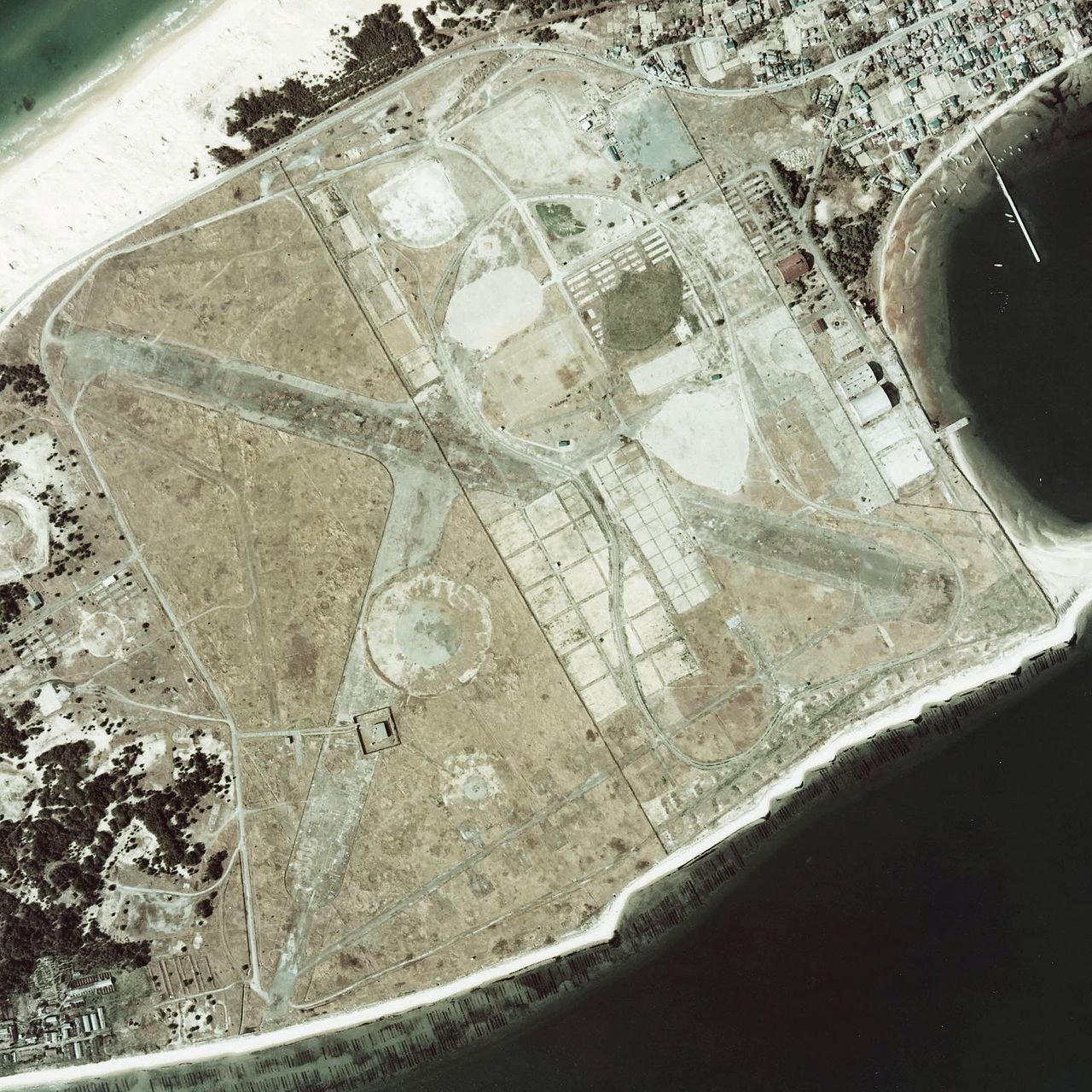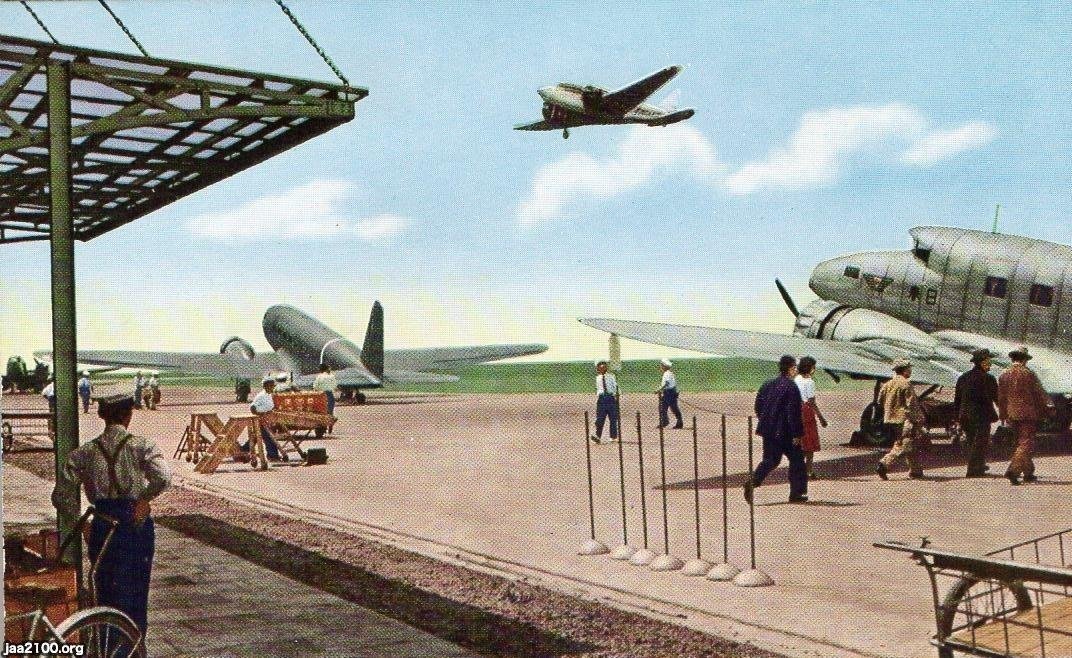Fukuoka Daiichi Airfield was once established by the Aviation Bureau of the Ministry of Posts and Telecommunications in Gannosu, Wajiro-mura, Kasuya-gun (present-day Higashi Ward, Fukuoka City), Fukuoka Prefecture. It is also known as Gannosu Airfield. It was the largest civilian airfield in Japan in the prewar period, with routes to Korea, Taiwan, the Republic of China, Manchukuo, and Southeast Asia operated by Dai Nippon Airways.
Although regular civilian flights had been operated at the Otoarai Army Airfield since 1929, Otoarai was far from the Fukuoka urban area, making it less convenient. At the time, there was the Fukuoka Airfield (Nashima Seaplane Airfield) in the vicinity of Fukuoka City, which was dedicated to seaplanes, but an airfield capable of operating land-based aircraft was required, so candidate sites around the city were investigated and selected, and in 1934, Gannosu was chosen.
Construction began in January 1935 at a total cost of 590,000 yen, and a runway (600 x 30 m) was built on a site of 590,000 square meters, a seaplane runway (80 m) and two hangars were built on the beach, and the airport opened the following June 1, 1936. Some documents state that "as of October 1936, the runway area was 550m east to west and 800m north to south. Fukuoka - Naha - Taipei was opened, and the following year, an express service between Tokyo - Fukuoka - Keijo - Sinkyo was opened.
In the wartime regime
From 1939, a large-scale expansion project was undertaken in a three-year plan, including the relocation of the Hakata Bay Railway Steamship Kasuya Line (now the Kashii Line) to the north side of the port. In 1940, a range beacon was installed at Fukuoka. During the Pacific War, the airport became a military airport, with a naval air force stationed there.
After the War
After the war, the airport was confiscated by the U.S. military and used mainly as an airfield for transport units under the name Brady Air Base (facility number: FAC 5006), but in 1961, the Japan-U.S. Joint Commission merged Camp Hakata, Brady Air Base, and Nishitosaki Communication Facility into Gannosu As of 1955, the runways were 1280m x 45 (steel mat) and 1158m x 30m (asphalt). After the Korean War, the Self-Defense Forces used the runway for paratrooping training (see Kashii Camp) as a temporary measure, and reciprocating aircraft and helicopters from Nishi Nippon Airways, Fukuoka Prefectural Police, etc. shared part of the runway and hangars. The construction of a large antenna for communications interception and an operation facility began in 1965, and the pavement of the runway was removed when the joint use ceased, effectively ending the airfield's function as an airfield. The communications facilities were completed in February 1966, and included the 14th U.S. Army Security Agency Field Station, Naval Security Group Activity, Hakata, However, due to reductions in the U.S. defense budget and the number of troops deployed overseas, the facility was closed and the airfield portion of the station was closed down. The airfield portion was closed in 1972, and the entire Gannosu Air Force Base was returned in 1977.
Gannosu Airfield in 1974



